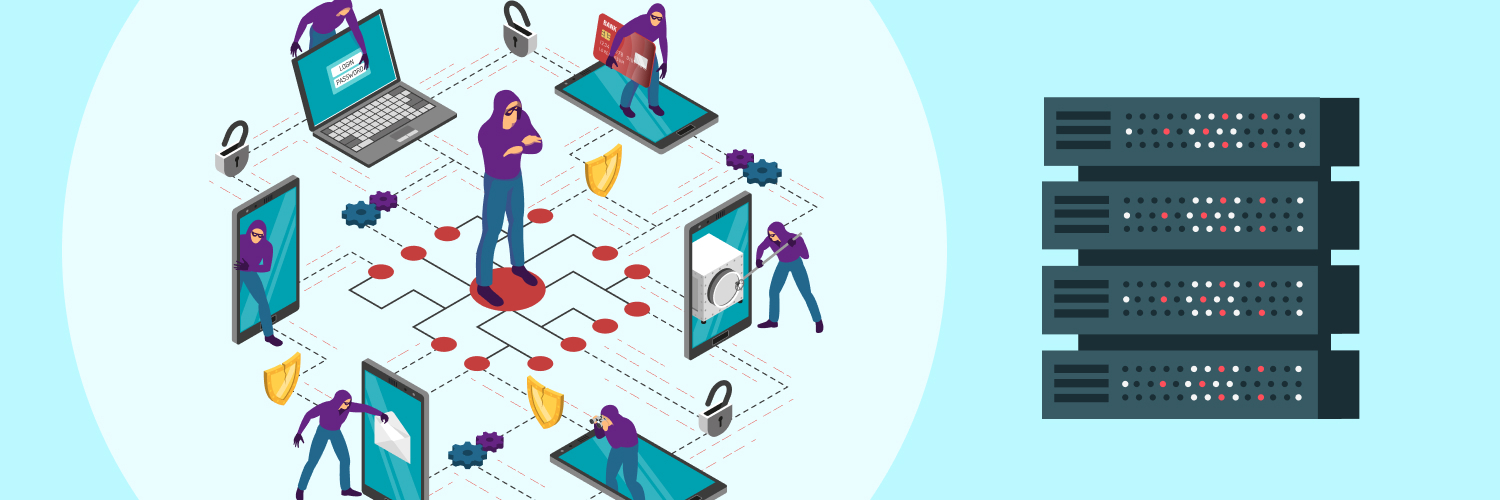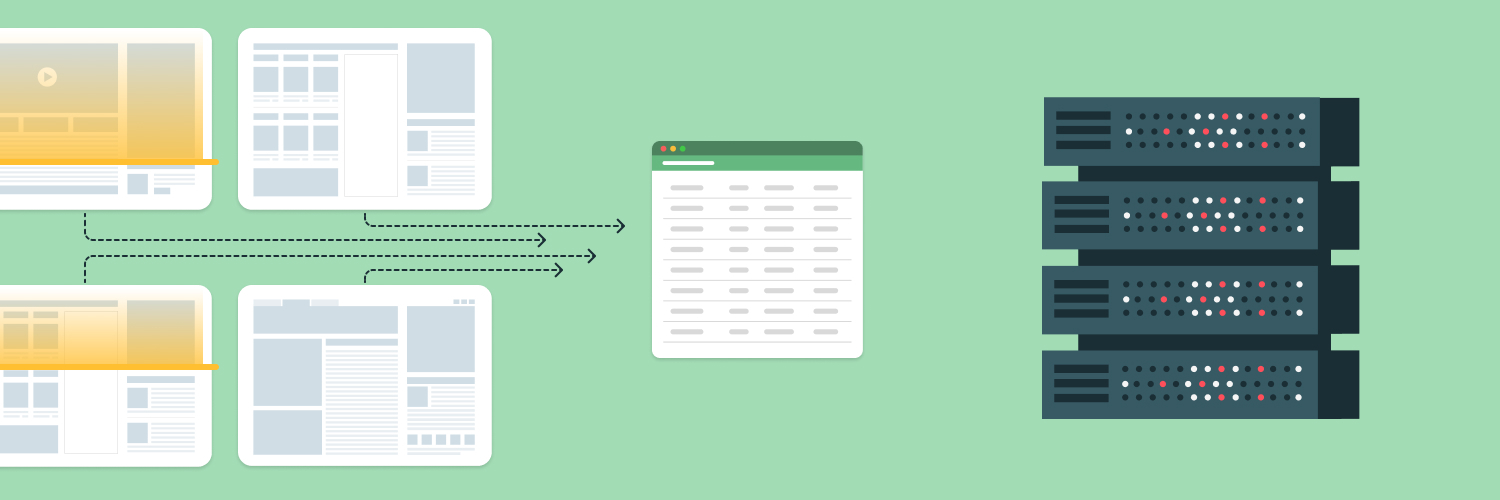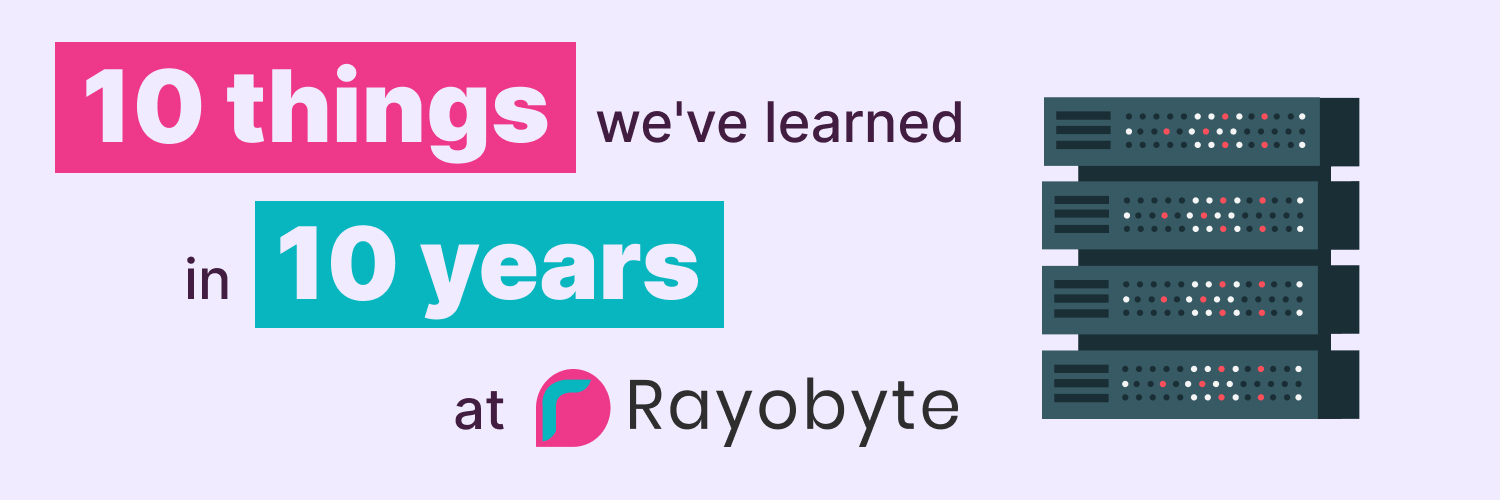The Ultimate Guide To Using Proxies For Advanced Data Analytics
The amount of data in the world has skyrocketed in recent years. In 2010, the planet generated two zettabytes of data or two billion terabytes. In 2021, more than 79 zettabytes of data were created. Current projections estimate that by 2025, there will be more than 181 zettabytes of information generated annually.
That’s a staggering amount of information. Businesses can use advanced data analytics to leverage the information they collect in ways never before accomplished. In fact, advanced data analytics goes far beyond traditional business intelligence practices to help companies develop more profound insights into their industries and customers. These insights lead to better decision-making and more effective businesses, overall.
However, advanced data analytic techniques all rely on the same fundamental process. To perform deep big data analyses, you need to collect relevant information. That can be the trickiest part of the process. Even the best analytical techniques won’t produce valid results without high-quality datasets.
This article will teach you how to power data collection with proxies and explain why proxies facilitate better and more advanced data analytics. But first, we’ll discuss the basics of advanced analytics, why they matter for businesses, and how they differ from traditional business intelligence. You can use the table of contents below to skip to the information you need.
What Are Advanced Data Analytics?

The phrase “advanced data analytics” covers many sophisticated methods for examining data. These methods are designed to discover trends in data invisible to human eyes and extrapolate them into future-oriented insights that support better decision-making.
The term is purposefully broad, covering all analytical techniques that are outside of the scope of traditional business intelligence. Many methods are included under this umbrella, such as machine learning, sentiment analysis, semantic analysis, forecasting, and more. The field of advanced data analytics (ADA) grows daily, and with it appear new techniques. Below, you’ll learn about the most common ADA methods.
Predictive analytics
Predictive analysis uses techniques like machine learning and data mining to forecast future outcomes using historical data. This style of analysis teases out trends that are invisible to human eyes, highlighting everything from potential areas of profitability to dangerous risks facing the company.
Businesses can use predictive analytics to make better business decisions. This form of ADA helps companies move past simply reacting to the past and begin making plans for the future.
Prescriptive analytics
Another common form of ADA is prescriptive analysis, the process of finding the best solution to future problems. This type of analysis looks at risk and profit forecasts and attempts to answer the question, “What do we do about this?”
Prescriptive analysis combines elements of BI with predictive analysis. Typically, prescriptive analysis compares different courses of action with predictive analytics to determine the likely outcome of each. Companies can then use this information to choose the safest course of action.
Machine learning
Machine learning can also be used on its own, outside of predictive analysis, to find patterns and trends in data. This technique relies on artificial intelligence (AI) technology designed to detect patterns in large amounts of data. Machine learning programs can then extrapolate from these patterns to produce additional instances of the pattern, whether that’s language — such as what AI retail chatbots do — or investing decisions.
Machine learning programs also refine themselves over time as they receive more data. That means these algorithms improve their analysis of information without human intervention.
Sentiment analysis
This technique is also known as opinion mining. It’s the process of studying collections of text such as product reviews or social media posts to identify the emotions they convey. Brands use sentiment analysis to learn about how their audience perceives them, their marketing campaigns, and their offerings. It’s an excellent tool to learn more about your reputation and public opinion in general.
A Brief History Of Advanced Analytics

Where does all of this analytical effort come from? Data analytics is a relatively young field. Before the advent of computers, all data analysis had to be done by hand. This made it difficult to do anything with large amounts of data.
In the 19th century, the first “tabulating machine” was invented by Herman Hollerith. This machine cut down the time it took to manage the U.S. Census from more than seven years to just 18 months. It’s often cited as the birth of data analytics.
Obviously, data analysis has advanced significantly since the 19th century. Over the 20th century, as computers progressed and storage capacities increased, it became easier for computer scientists to both store and examine large datasets. The invention of the programming language SQL and the development of relational databases in the 1980s was the first turning point, allowing modern analytical practices to develop.
These were the first language and database systems that let computer scientists easily automate the search for trends in data. In recent years, these advanced data analytics tools have improved significantly. The increase in cheap data storage, the growth of the internet and cloud computing, and the rise in processing power have all made it easier to handle the three fundamental tasks of data analysis: collection, storage, and interpretation.
With modern computers, it’s easy to store vast amounts of data in one place and quickly handle requests to manipulate that data in specific ways. As a result, it’s easy and affordable for companies of every size to access the technology and software necessary to handle advanced data analytics.
Stages Of Advanced Data Analytics

What does the act of performing advanced data analytics look like? Regardless of the specific method you use, the fundamental structure is the same. There are five stages of the process. Every analysis must go through these steps to produce an accurate, reliable result.
1. Data preparation
Before you can begin any analysis, you need to prepare your data. This step is the most critical part of the entire process. There’s a common phrase in data analysis: “Garbage in, garbage out.” Without a well-prepared dataset, you’ll never get high-quality results.
The data preparation phase involves:
- Safely and securely gathering relevant data
- Filtering out irrelevant information
- Structuring the dataset in a way that’s easy to analyze
Standard methods of collecting business data include using web scrapers and proxies to scour the internet and gathering data about your site visitors through cookies. If you don’t want to go through the effort of scraping sites yourself, you can also use advanced data analytics tools to gather your data for you. Once your information is collected, you can go through it and clean it up, removing false positives and making sure that the formatting is uniform.
2. Data exploration
Next, you can perform data exploration. This is your first foray into what your data has to offer. Data exploration is the process of looking at your datasets in multiple ways to spot patterns. You can sort the data in spreadsheets, visualize it through cluster graphs and scatterplots, or look at it through the lens of different variables.
Data exploration is key to getting an overview of your dataset. This step gives you an idea of where to go from here. If you notice something of interest right off the bat, you can make that the target of deeper analyses.
3. Search
After you’ve explored the data, you can look for specific things. Are you interested in results over time? Do you want to see the data you collected on a particular day? You can search your data for outliers, specific variables, and more.
The search phase is excellent for finding examples. Whether you want to find exceptions or representative samples, this helps build engaging materials from your dataset.
4. Analytics
Now it’s time to analyze your information. You’ve found the low-hanging fruit and come up with some ideas. You can use advanced data analytics to see other patterns that aren’t visible at a glance and get deeper insights into your dataset.
For instance, you can use sentiment analysis to get a genuine understanding of your customers’ overall opinion of your brand or products. It’s easy to glance at a dataset and only see what you want to see. With an in-depth analysis, you’ll have a quantitative understanding of how people feel about your brand. That helps you make better decisions about how to improve.
5. Deployment and monitoring
The final step to data analysis is the actual deployment of your new strategies and ideas inspired by the past three steps. You’ll implement new initiatives that the data says should improve your chosen KPIs. More importantly, you’ll monitor these projects to see if things improve.
At this point, the cycle starts from the beginning. In monitoring your newly deployed projects, you return to the data preparation step, collecting new information. At regular intervals, you can use this data to perform additional analyses. The result is an in-depth understanding of how your initiatives are doing over a certain amount of time.
Tasks Advanced Data Analysis Improves

To understand how advanced data analytics can improve your business, it helps to understand the specific tasks the process simplifies. There are five essential tasks that you can improve with better data analytics practices.
- Segmentation: This is the process of grouping items based on their similarities. You can use data analytics to segment your customer base on more specific things. With machine learning, for instance, you can segment your audience on patterns even your customers don’t notice, such as correlations between how long they spend on certain pages and whether they convert.
- Classification: Classifying behaviors and trends are crucial to making sense of your data. Good analytical programs will help you classify your customers’ behaviors, your marketing efforts, and even your competitors’ actions as you collect information.
- Correlation: A fundamental part of learning from your data is spotting correlations. However, it’s easy for humans to miss correlations that are obvious to algorithms and advanced analytical software in large datasets. You can use data analytics to spot correlations between customer purchases and your marketing efforts, the time of year, or anything else you collect information about.
- Association: Similar but distinct from correlation is association. This process lets you determine when events or traits typically occur at the same time and find further rules, such as “If X and Y occur, Z will likely also occur.” The in-depth analysis helps you find these associations more effectively.
- Forecasting: The purpose of data analysis is to make better decisions by having a clearer picture of the future. By improving your analytical processes, you can make more robust forecasts about the results of different actions and therefore make better decisions.
How Does Advanced Data Analytics Help Businesses?

At this point, you probably see the potential of advanced data analytics. This powerful toolset offers limitless opportunities for businesses that choose to use it.
One of the most significant benefits of advanced data analytics is its flexibility. These processes can be applied to various industries in a variety of ways.
There’s no one right way to implement data analytics in your company. The way you can benefit from this process depends on your chosen business model. However, some benefits are universal. These innovative techniques can provide businesses like yours with boosts such as those mentioned below.
Identifying business opportunities
The most apparent benefit of advanced data analytics is its ability to shed light on otherwise-hidden business opportunities. Without the right analytical tools, it’s easy to miss the potential for growth and profit in the sheer volume of data.
For example, machine learning offers businesses a new level of precision in exploring new high-potential customer segments. This analytical technique can spot trends in your customer base that can be monetized for better revenue. The same process can help you discover purchasing trends early, allowing you to improve your products or marketing campaigns.
Similarly, advanced data analytics are excellent for identifying long-term trends. Human marketing and sales experts may make exceptional decisions regarding short-term trends, but they are typically less proficient at long-term predictions. Advanced data analytics allows these experts to make better long-term forecasts and improve outcomes on large-scale initiatives.
Improved customer acquisition and retention
The process of examining things like how your customers feel about your company does more than just improve your business operations. Using techniques such as sentiment analysis can help you directly impact the opinions and decisions of your customers. When you understand what parts of your product, service, or brand appeal to — or bother — your intended audience, you can take action to improve those elements.
Even less specifically focused types of data analysis can help you improve the customer experience. For instance, you can study your customers’ web browsing habits to discover their preferences. You can use that information to tailor your offerings and website to meet their needs in ways they didn’t even think to voice.
Streamlining human resource processes
Data analysis can also help you improve your internal processes. Human resources (HR) is an example of a department where data analysis is often overlooked. You can analyze your HR data to improve staff management and improve your operations overall.
With better HR data analysis, you can make better staffing decisions on all fronts. You can make more informed decisions about promotions, write better performance evaluations, and learn when to increase headcount. You can even increase employee retention by identifying common problems and offering better professional development by addressing employee weaknesses.
Other benefits
With the right data analytics approach, your business can see benefits such as:
- Better day-to-day decision-making: With regular data analysis, you’ll always have an up-to-date and in-depth understanding of how your company is performing. Every decision you make can be an informed and justified choice, leading to better results overall.
- Improved visibility and transparency: As businesses grow, it can be challenging to monitor the big picture. Advanced data analytics gives you the tools to get a genuine overview of your company’s performance from top to bottom. It provides better visibility and transparency, so everyone who needs to understand what’s going on can do so.
- Greater agility: It can be hard to make significant changes to a business if you can’t convince decision-makers that they’re worthwhile. When you have analytical tools to back up your claims, you can get everyone on board with changes in less time, making your business more agile.
- Development of data-driven culture: To truly put your business on the path to success, you need your entire company to commit to data-driven decisions. By implementing better data analysis, you give everyone the tools to make decisions based on data and build a culture of informed choices.
Advanced Data Analytics Vs. Business Intelligence

The next question you might have is, “how is advanced data analytics different from business intelligence?” That’s an excellent question. After all, business intelligence (BI) and advanced big data analytics have plenty of similarities.
You can think about advanced analytics as evolving out of traditional BI. Both processes involve studying and summarizing past and current data. BI focuses on collecting past and present performance data to look for trends and make day-to-day decisions. It’s also used to learn from the past, identifying successes, failures, and anomalies. This can help inform future decisions.
Advanced data analytics goes a step further. These techniques generate detailed models not only of the past but also of the future. They used sophisticated mathematical formulas and algorithms to take the data they’ve been fed and project how those trends will continue. Just as importantly, these techniques don’t face human limitations. A great analytical process can spot trends in data that a person cannot.
Essentially, advanced data analytics takes the processes of BI and expands them using modern technology. Everything you can do with BI can be done, and done better, by advanced analytical techniques.
Use Cases Of Advanced Data Analysis

ADA is already changing industries. It can be found everywhere, from marketing to insurance. Here’s how advanced analytics is making a difference with real-world applications.
Marketing
Advanced analytics has been embraced in marketing. Marketing aims to understand consumers’ behavior to make better advertising decisions and drive more purchases. ADA provides marketers with new techniques and tools to do just that.
By collecting information from many places and tracking consumers across different platforms, marketers can collect vast amounts of data. With advanced data analytics, marketers can use that information to find the hidden trends in their customers’ behavior. They may identify new customer segments or discover associations between seemingly unrelated factors.
For instance, marketers can use cluster analysis to find clear customer segments. Cluster analytics helps make correlations and associations in behavior, demographics, and time visible to the naked eye. Marketers can use this to understand who’s buying which products and why, leading to better marketing campaigns.
Retail
There are multiple ways advanced analytics can improve operations for retailers. For example, many retailers find that storing excess stock is one of their greatest expenses. These businesses can make more accurate predictions about how well different items will sell by using predictive analysis. That can help them order the exact amount of stock they need and avoid overstocking costs.
Online retail can also benefit from ADA techniques. Using machine learning processes, a retailer can implement online chatbots that help consumers find products more effectively. They can also use cohort analysis to track customers’ behavior over time to see how different customer segments react to things like sales offers and holidays.
Healthcare
ADA is also making waves in medical fields. Researchers have begun using advanced analytics to make better risk predictions for conditions like diabetic ketoacidosis, cancer, and viral infections. These researchers have developed platforms that allow physicians and patients to track health statistics and make predictions based on past data. This can help patients get appropriate treatment before these conditions negatively impact their lives.
Insurance
One of the first places advanced big data analytics was used is insurance. The entire purpose of insurance is to determine the probability of certain types of accidents, disasters, and illnesses and charge an appropriate amount to offer protection from them. ADA makes this significantly simpler.
Before ADA, insurance rates and premiums had to be determined entirely on past information and human predictions. It relied on human examination of data to find risk factors and select the appropriate amount to charge for insurance. This was time-consuming and difficult and left insurance companies open to bias and mistakes.
Today, advanced analytics makes it much easier for these companies to make better and more precise risk forecasts. Insurance actuaries can use ADA techniques to examine vast amounts of data about their chosen industries to find unexpected risk factors and make long-term predictions with greater accuracy. This leads to more accurate premiums and less risk of unforeseen payouts.
How To Conduct Advanced Data Analytics

In this article, you’ve learned the history of advanced data analytics, the different types of analysis, and what advanced analytics can do for your business. Now it’s time to move on to the subject of actually performing this analysis.
There are dozens of advanced analytical methods that you can use in your business — far too many to explain in a single guide. You can and should explore these techniques in-depth to choose the methods that meet your needs. Instead, this guide focuses on a fundamental aspect of all advanced analytics: the process of collecting relevant data.
This is the first and, arguably, most important step of advanced analytics overall. Understanding how to gather data and organize it effectively is key to getting useful results from even the most effective analytical process. In modern analytics, that means you need to understand the function and uses of web scrapers.
What Is Web Scraping And How Does It Help Advanced Analytics?

Web scraping is the process of scanning websites and extracting specific data from within their HTML. This task is performed by automated programs known as web scrapers or bots. The bot handles the tedious data collection process, gathering the information you care about from big websites without the need to visit each page individually yourself.
Web scrapers also make data collection faster and remove human error. With a scraper, you will always collect precisely the information you instruct it to compile. Furthermore, a bot will always be faster than a human since it doesn’t need to wait for an entire page to load and visually identify information. It can read the HTML in the blink of an eye, copy the information you need, and then move on to the next page.
Last but not least, good web scrapers organize data for you automatically. A web scraper will output the information you want in your preferred format, such as a .CSV file, spreadsheet, or even a direct upload to another piece of software. That makes it easy to analyze data as soon as it’s collected.
All told, web scrapers are a vital tool for anyone looking to perform big data analytics. They make the process significantly faster and prevent mistakes. As long as you know how to tell the scraper to collect the data you want, you can get all the information you could ever want in a fraction of the time of manual data collection.
Alternatives To Performing Web Scraping Yourself: Rayobyte’s Web Scraping API

Web scrapers do have one drawback. To get the data that interests you, you’ll need to write a custom web scraping program and clearly define the exact information it should gather. Computers are incredibly specific, so a tiny error can lead you to collect junk data instead of the information you want. Even if you feel comfortable writing a scraping program, it’s still time-consuming to manage the scrape and handle the inevitable errors, redirects, and CAPTCHAs that any scraper runs into.
What if you don’t want to manage the scrape on top of your other responsibilities? If you want to focus on the analytical aspects of ADA instead of data collection, you have an alternative. You can use a program like Rayobyte’s Web Scraping API to collect and organize your data for you.
Rayobyte’s Web Scraping API will produce custom scraping solutions that fit your needs. You can choose to use a Rayobyte’s Web Scraping API module and modify it to gather the information you want, or request a completely custom scraper. All you need to do is inform the Rayobyte’s Web Scraping API team of the data you want to collect and how often, and they will write the perfect web scraper for your needs. You can trust the scraper to do its job and focus on the analytics that matter to you.
Whether you choose to write a scraping program yourself or work with Rayobyte’s Web Scraping API, web scrapers are just half of the data collection picture. A good scraper works best if it’s paired with the right proxies.
Why You Need A Web Scraping Proxy For Advanced Big Data Analytics

Proxies are essential for web scraping because of how these bots interact with the internet. A web scraper performs data collection by quickly sending many requests to a website. This makes it clear to the website the bot is scraping that it isn’t a human visitor.
Unfortunately, many websites are rightfully cautious of non-human visitors since many are malware programs. As a result, web scrapers can get banned from sites, ruining your data collection process. That’s why proxies matter.
A proxy acts as a shield for your IP address. This unique series of characters tell websites where site visitors are from and what kind of device they’re using. When a site bans a visitor, it blocks the visitor’s IP address, blocking that IP from accessing any information on the site. When using a proxy to access a website, the site sees the proxy’s IP address instead of your own. If a website detects that your web scraper is a bot, it will ban the proxy IP, not your actual IP address.
Using proxies neatly solves the problem of having your web scraper banned during data collection. If your proxy IP address is banned, you can simply switch to a different proxy and continue your scrape without missing a step. However, not all proxies are equally effective. Some proxies are better at keeping your data collection process running smoothly. Here are three of the most effective styles of proxies for advanced data analytics.
Rotating proxies
There are three primary forms of proxies: dedicated, semi-dedicated, and rotating. A dedicated proxy is the equivalent of a private jet. It’s reserved for the use of a single user, and it’s relatively expensive because of that. However, dedicated proxies are also faster and more secure since you’re not sharing their bandwidth with other unknown users.
A semi-dedicated proxy is shared by a small group of users, like a family car. Because these proxies are split among a group, they’re less expensive. However, they’re also less secure since you don’t know what the other users are doing. They’re also slower because of the increased use. Still, if you work with the right proxy provider, these risks can be minimized to make semi-dedicated proxies a cost-effective solution.
Both dedicated and semi-dedicated proxies give users access to a single IP address. Rotating proxies, however, offer access to many IP addresses that are regularly swapped out. A rotating proxy offers the most anonymity possible for web scrapers. Since the proxy IP address is constantly changing, it’s difficult for websites to even notice that a bot is visiting or block any given IP address.
Furthermore, if a rotating proxy IP address does get blocked, it’s less likely to cause problems. Since the proxy is designed to swap IPs regularly, another can be swapped in automatically as soon as one is banned. This helps you keep your data collection running seamlessly and without delays.
Residential proxies
Another method of classifying proxies is based on where the proxy IP address originates. Depending on the source of a proxy, it may be classed as a datacenter or residential proxy. A residential proxy originates from a residence, such as a home or an apartment. These proxy IP addresses are given out by Internet Service Providers (ISPs) to homeowners alongside equipment such as modems. This means that these IP addresses are linked to physical addresses.
Typically, websites are more forgiving toward residential IP addresses. Sites don’t want to block everyday users, so they are less suspicious of activity from these proxies. As a result, they’re less likely to get banned, making them ideal for web scraping. You can scrape significantly more data before risking a ban when you use residential proxies. However, they are also challenging to acquire, so they are relatively expensive compared to datacenter proxies.
A data center proxy is an IP address that originates from a data center full of servers. These proxies are significantly easier to produce and find, making them less expensive than residential ones. However, they do not have a linked physical address, so they stand out as a proxy. Some sites even automatically ban data center proxies, preventing anyone using one from visiting their pages.
These drawbacks make datacenter processes less than ideal for web scraping. While each data center proxy is less expensive than a residential proxy, you may need hundreds or thousands to complete a web scraping project, canceling out the savings.
Rotating residential proxies
You don’t have to choose between residential and rotating proxies. The two categories aren’t mutually exclusive. In fact, you can take advantage of both types by working with rotating residential proxies.
A rotating residential proxy has all the benefits of residential IP addresses combined with the anonymity of swapping out IPs regularly. When it comes to web scraping, rotating residential proxies are the absolute best option. They are hard to detect and easily replaced when a ban takes place.
The Best Proxies For Collecting Big Data And Advanced Analytics

The efficacy of a proxy also depends on the service provider you choose. If you want to perform data scrapes efficiently, you need to work with a proxy provider that’s fast, safe, and secure. More importantly, you need to trust that your provider won’t go down right when you need it most.
Rayobyte offers you all this and more. Regardless of whether you choose data center or residential proxies to protect your web scraper during data collection for advanced analysis, we provide a wide variety of proxies and protocols for you to choose from.
With Rayobyte, you can expect the best possible web scraping experience. You can choose to create your scraper or work with Rayobyte’s Web Scraping API. Either way, Rayobyte offers speeds of 1 GBs and unlimited bandwidth. Even as your scrapes grow, our bulk pricing options will save you up to 20% on enterprise-level orders.
Best of all, our customer service agents are available to answer any questions you might have and render any assistance you may need 24/7.
Advanced Data Analytics Are The Future

Advanced data analytics help businesses improve the accuracy of their analyses and make better decisions. They let companies spot profitable opportunities in vast quantities of data. They also help them properly target potential customers and predict future outcomes based on past results. That leads to better business operations and greater success overall.
Overall, advanced data analytics give you limitless opportunities for growth and profitability. The right tools help you take advantage of this potential. Using web scraping proxies lets you neatly manage the process’s first and most crucial step. With the right proxies, you can collect valuable data safely and efficiently, fueling the rest of your data analysis process and granting you the opportunity to make better business decisions.
The information contained within this article, including information posted by official staff, guest-submitted material, message board postings, or other third-party material is presented solely for the purposes of education and furtherance of the knowledge of the reader. All trademarks used in this publication are hereby acknowledged as the property of their respective owners.



